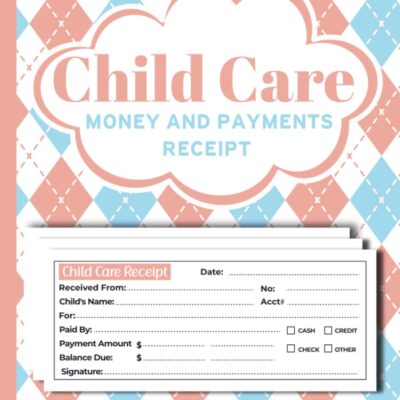
Teaching consent to our children is one of the most important things we can do as parents. Consent is about respecting each other’s boundaries and ensuring everyone feels safe and comfortable. It’s not just a buzzword; it’s a fundamental principle that helps our kids navigate friendships, relationships, and everyday interactions. In today’s world, where understanding consent is more important than ever, let’s explore how we can effectively teach this vital lesson to our children in a simple, friendly way.
Understanding Consent
So, what exactly is consent? At its core, consent means permitting something to happen. It’s about saying “yes” when you’re comfortable and “no” when you’re not. This applies to everything from sharing toys to physical affection. Children must understand that consent should always be enthusiastic and never forced.
Here’s a friendly way to explain it to your child: “When you want to play with a friend’s toy, you should ask first. If your friend doesn’t want to share, that’s okay too!” This simple explanation helps kids grasp the concept of asking for permission and respecting each other’s feelings.
⭐️ Tap the exclusive deal link to score top-quality items at ultra-low prices. 🛍️ These unbeatable deals are only available here. Shop now and save big!
Starting Early
It’s never too early to talk about consent! Even toddlers can begin to understand personal space and the importance of asking before taking something. When children are young, we can introduce these concepts in everyday situations.
For instance, when your child wants to hug someone, remind them to ask first: “Can I give you a hug?” This small step encourages them to consider other people’s feelings and boundaries. Also, use simple language they can understand, like “personal space” and “feelings.”
Encouraging questions is also crucial. When your child asks about something, take the time to answer them in a way that’s easy to grasp. This helps build a foundation for deeper conversations about consent as they grow.
Practical Tips for Teaching Consent
Modeling Behavior
To learn a lot, kids should watch the people around them. Model respectful behavior to show your kids what healthy relationships look like. If you ask permission to hug a friend or discuss feelings openly with your partner, your child will see how consent works in real life.
Let them see you respecting others’ boundaries, too. For example, if a friend says they don’t want to be touched, model how to respond: “That’s okay! Let’s give them some space.” This demonstrates respect and helps your child understand that everyone has different comfort levels.
Encouraging Communication
Teaching Consent to your child to communicate their feelings is essential. Please encourage them to express what they want and how they feel. Teach them to use phrases like “I feel” and “I want.” For example, “I feel sad when you take my toy without asking.”
Help them understand that communication is a two-way street. Encourage active listening by reminding them to pay attention when someone else expresses their feelings. If a friend says they’re uncomfortable playing a particular game, discuss how to respect that. This reinforces the idea of consent and helps your child develop empathy for others.
Role-Playing Scenarios
It can be fun and helpful to play a role teach consent. Create simple scenarios your child can relate to, like asking a friend to join in a game or wanting to share a snack.
For example, practice asking for permission: “Can I play with your toy?” or “Is it okay if I give you a high-five?” This not only helps them learn how to ask for consent but also gives them practice in responding appropriately if someone says “no.”
Make it a game! Kids love pretending, and this approach makes learning about consent engaging and enjoyable.
Respecting Personal Space
Talking about personal space is crucial when teaching consent. Explain to your child that everyone has their bubble, and respecting that space is essential. Use fun games like “personal bubble” to illustrate the concept. You could say, “Imagine you have a bubble around you. If someone gets too close, it pops! We need to keep our bubbles safe.”
Help them understand that it’s okay to set boundaries and say “no” if someone makes them uncomfortable. Teach them phrases like, “Please don’t touch me” or “I need some space.” This way, your child learns that communicating their boundaries is perfectly acceptable.
Using Stories and Media
Stories and media can make learning about consent relatable and fun! Look for books, shows, or movies that depict healthy relationships and consent. Some great choices include kids’ books that focus on feelings and friendship.
Talk about the characters ‘ choices after reading a story or watching a show. Ask questions like, “How did they ask for permission?” or “Did they respect each other’s feelings?” This discussion helps reinforce the lessons of consent and encourages your child to think critically about the situations they encounter in their own lives.
⭐️
Another surprise for you! Click to earn with me together🤝!
Reinforcing the Lesson
Teach consent isn’t a one-time chat; it’s an ongoing conversation that grows with your child. Keep the dialogue open and encourage your child to regularly discuss their feelings and experiences.
Check-in with them often. Ask questions like, “How was your day? Did you play with your friends?” There is a safe place for them to share their thoughts because of this feelings with you. As they grow, adapt your conversations to reflect their maturity. The lessons about consent should evolve as they navigate new relationships and experiences.
Conclusion
In conclusion, teaching consent to our children is essential for helping them build healthy relationships and respect others’ boundaries. By introducing the concept early, modeling respectful behavior, and encouraging ongoing conversations, we can empower our kids to communicate openly and confidently.
Remember, it’s all about creating a safe a place where your child feels safe talking about how they feel and boundaries. Together, we can nurture a generation that values consent and respect in all their interactions.
If you want to learn my #1 PediaSure Grow & Gain With Immune Support, Click Here Now.





